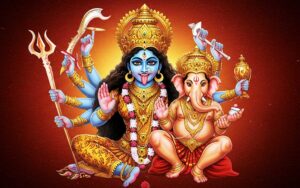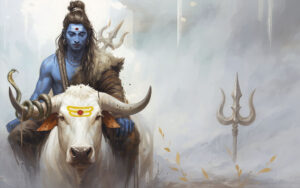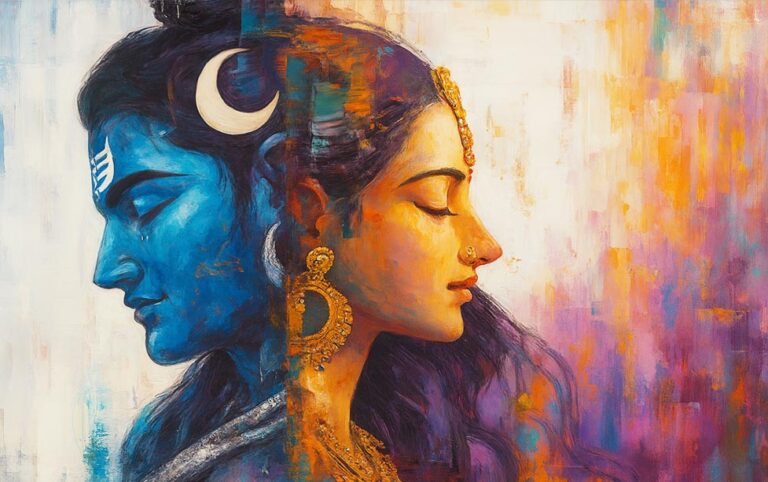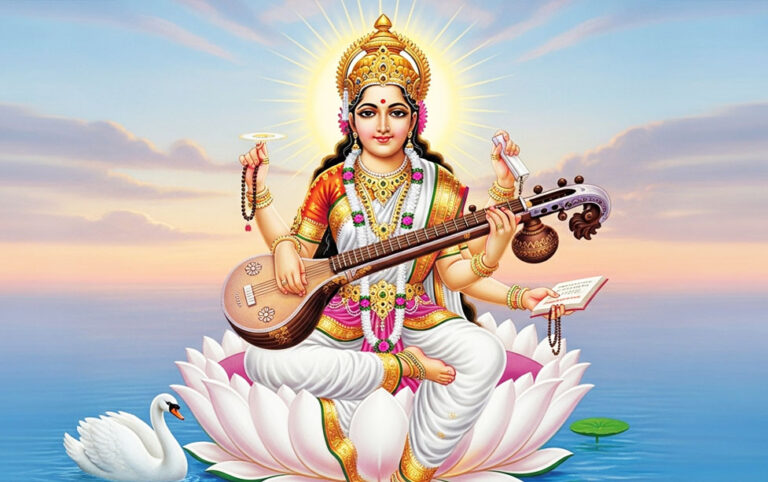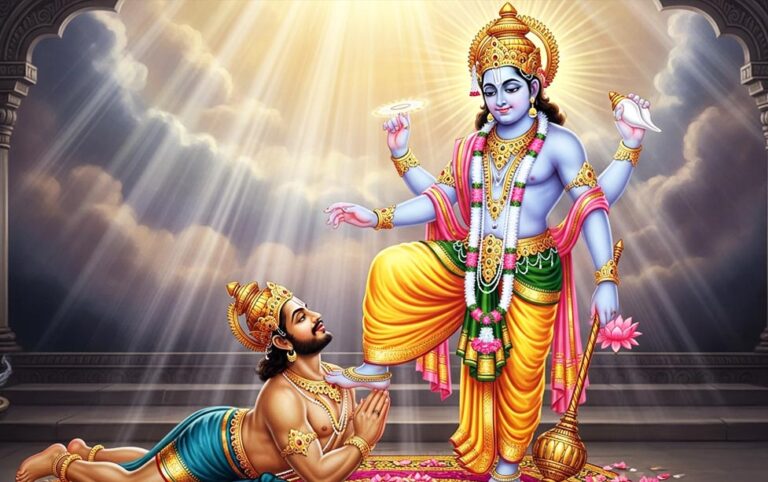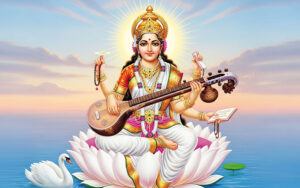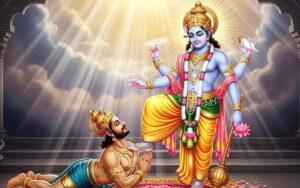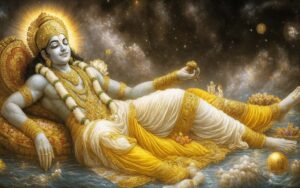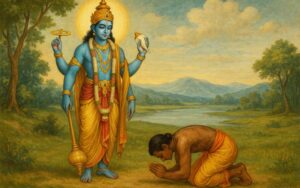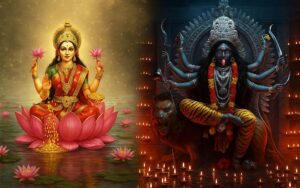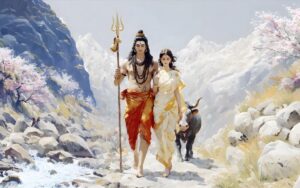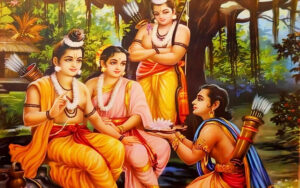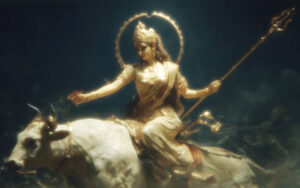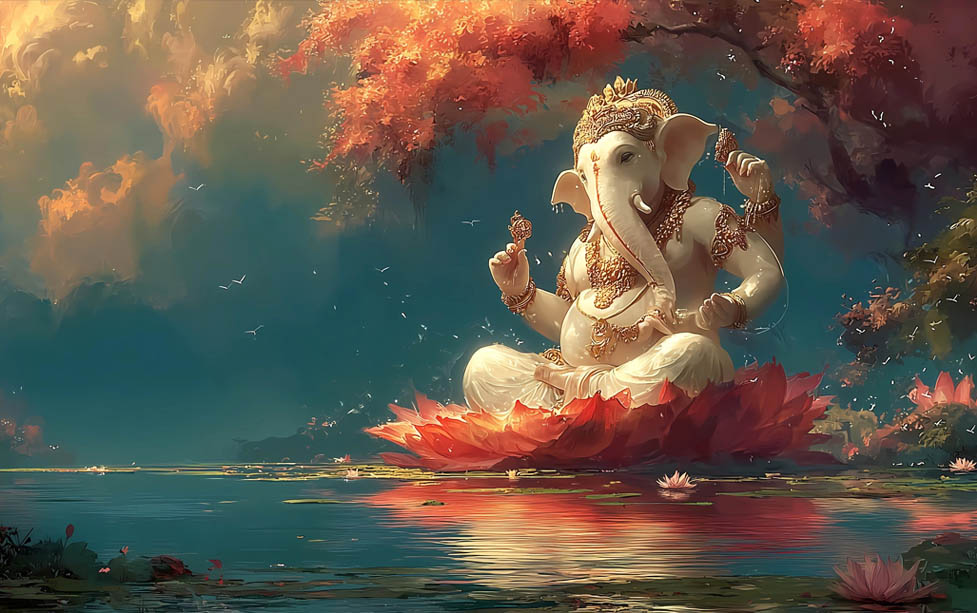
No time for reading the story? Give it a listen on Spotify.

This is the timeless story of Lord Ganesha’s divine family, where each member symbolizes wisdom, prosperity, and contentment.
Characters in the story:
Lord Ganesha: Lord Ganesha, also known as Ganapati, is a Hindu deity who is revered as the remover of obstacles and the god of new beginnings, wisdom, and intellect. He is depicted with the head of an elephant and is widely worshiped across India and beyond.
![]()
Ganesha’s family: Wives: Riddhi and Siddhi. Children: Shubha, Labha, and Santoshi Maa.
In the vast expanse of Sanatan traditions, one deity stands out for his warmth, wisdom, and universal appeal — Lord Ganesha, the elephant-headed god who removes obstacles and blesses all beginnings. Revered as the embodiment of intellect, success, and prosperity, Ganesha is worshipped before every new venture, symbolizing clarity of thought and purity of purpose. From grand temples to humble doorsteps, his presence brings reassurance and hope.
Yet beyond his familiar image lies a deeper world of stories — tales of his divine family, his wives Riddhi and Siddhi, and his children Shubha, Labha, and Santoshi Maa, each representing a facet of spiritual and material harmony in life.
The Story of Ganesha’s Wives: Riddhi and Siddhi
In the Puranas, Ganesha is portrayed as a devoted husband married to two radiant goddesses — Riddhi (Prosperity) and Siddhi (Spiritual Power). Their union symbolizes the perfect balance between worldly success and inner wisdom — two paths that lead to true fulfillment.
The origins of this marriage differ across ancient scriptures and local traditions:
According to the Shiva Purana, the creator god Brahma had twin daughters, Riddhi and Siddhi. When Ganesha grew into his divine glory, Brahma offered them to him in marriage, blessing the world with the union of prosperity and wisdom.
In another Puranic version, the sacred goddess Tulsi once proposed marriage to Ganesha. When he politely declined, she cursed him to marry twice — thus, Riddhi and Siddhi became his destined companions.
Symbolically, Riddhi and Siddhi are not merely his consorts; they represent the energies that Ganesha bestows upon his devotees. Riddhi brings material abundance, while Siddhi grants spiritual insight.
Across India, beliefs vary:
In North India, Ganesha is almost always depicted with Riddhi and Siddhi beside him, smiling gracefully.
In South India, he is often revered as a brahmachari (celibate) deity — a spiritual being detached from worldly ties.
In Bengal, he is linked with Kola Bou, the banana-tree goddess who stands beside Lord Ganesha during Durga Puja, symbolizing fertility and prosperity.
The Story of Ganesha’s Children: Shubha, Labha, and Santoshi Maa
Just as his marriages reflect balance, so do the tales of Ganesha’s children, who embody the blessings that flow from his divine energy.
His sons, Shubha (Auspiciousness) and Labha (Profit), personify good fortune and success. In some Puranic texts, Shubha is born of Siddhi, while Labha is born of Buddhi (Wisdom) — symbolizing that true profit and auspiciousness arise when intellect and spiritual discipline come together.
Maa Santoshi is revered as the goddess of contentment and satisfaction. Her name comes from the Sanskrit word Santosh, meaning peace, fulfillment, and inner joy, while Maa is a respectful title that reflects her nurturing, protective nature.
Worshipped especially on Fridays, Maa Santoshi is believed to be a manifestation of divine grace who fulfills the true and pure desires of her devotees. She symbolizes calmness amid life’s storms and teaches that true happiness lies in gratitude and balance. Devotees believe that praying to her brings mental peace, clarity, and happiness, helping them remain content through both success and struggle. Her blessings are said to protect worshippers from negativity and ensure that their lives are guided by serenity, love, and satisfaction.
The Symbolism of Ganesha’s Family
Together, Ganesha, Riddhi, Siddhi, and their children form a divine family that represents the harmony between material and spiritual life.
Ganesha removes obstacles and guides the soul toward clarity.
Riddhi and Siddhi bless devotees with prosperity and wisdom.
Shubha and Labha ensure that every action is auspicious and fruitful.
Santoshi Maa reminds us that true happiness lies in contentment.
In this way, Ganesha’s family is not only divine but also deeply symbolic — teaching that success without wisdom, or wealth without satisfaction, is incomplete.


